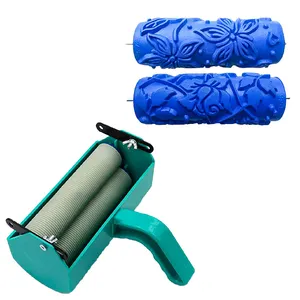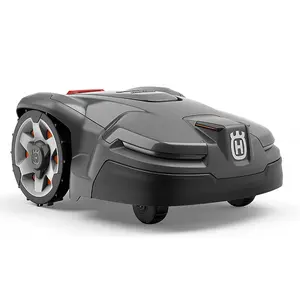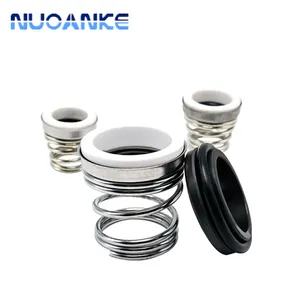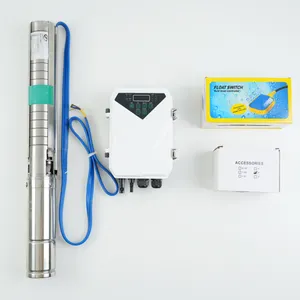Popular in your industry










































































































































































































Top categories
About fascia screws
Introduction
Home improvement projects require meticulous attention to detail, especially when it comes to selecting the right materials. One such crucial component is the humble fascia screw. These specialized fasteners play a pivotal role in decking, ensuring the longevity and durability of your deck. This article provides a comprehensive guide to understanding fascia screws, their types, and their importance in home improvement projects. We delve into the specifics of stainless steel and ceramic coated screws, how to choose the right ones for your project, and the correct installation process. We also discuss the importance of regular maintenance to ensure the longevity of your fascia screws and boards.
Understanding Fascia Screws: What They Are and Why They Matter
Fascia screws are a game-changer in the decking industry. Unlike regular screws, they allow decking materials like wood, PVC, and wood-plastic composites to expand and contract naturally with temperature changes, preventing warping or cracking. The innovative fascia system includes a specialty drill and matching screws. The system is designed to handle the natural expansion and contraction of decking materials, reducing strain on the fasteners and enhancing the longevity of your deck.
Types of Fascia Screws
Fascia screws are specialized fasteners designed to attach fascia and riser boards to deck framing. There are different types of fascia screws suitable for different materials. For instance, some screws can be used on thicker fascia boards. Wide-head screws are generally used on composite fascia, while trim-head or smaller headed screws are typically used on PVC fascia. Some of the popular types include stainless screws for PVC Fascia, Fascia Screws for composite Fascia, pre-drill bit for Fascia Fasteners, and more.
Stainless Steel Fascia Screws
Stainless steel fascia screws offer numerous advantages for your home improvement projects. They are known for their exceptional corrosion resistance, making them a durable choice for any environment. These screws maintain their integrity in both high and low temperatures, ensuring a strong hold year-round. Despite a higher upfront cost, their longevity results in long-term savings as they require less frequent replacement. Stainless steel fascia screws come in a variety of styles and shapes, catering to diverse project needs. Additionally, their rust, corrosion, and scratch-resistant properties keep them visually appealing for a longer period.
Ceramic Coated Fascia Screws
When it comes to decking, the choice of screws is crucial. One popular option is ceramic coated screws. A user shared their experience of using ceramic coated screws for their deck, highlighting the cost-effectiveness of this choice. However, they also noted that upgrading to stainless steel would cost more. This brings up an important question: is the extra cost worth it, or are ceramic coated screws sufficient for the task? While the answer depends on various factors, this anecdote underscores the importance of considering both cost and material when choosing screws for your deck.
Choosing the Right Fascia Screws for Your Home Improvement Project
When choosing the right fascia screws for your home improvement project, consider the material and environmental conditions. Fascia screws come in stainless steel or epoxy coated variants. For applications where corrosion or large amounts of expansion and contraction of the fascia material is a concern, stainless Fascia Screws are recommended. Always follow the decking manufacturer's recommendation when selecting the type of fascia screws.
Consider the Material of Your Fascia Board
Fascia Boards are often made from a wide range of different materials, each posing various advantages and challenges. The most common materials include wood, PVC, fiber cement, vinyl, and aluminum. The material of your fascia board plays a crucial role in determining the type of fascia screws you should use. For instance, wooden fascia boards might require different screws compared to those made from PVC or aluminum. Therefore, it's essential to consider the material of your fascia board when choosing the right fascia screws for your home improvement project.
Evaluate the Environmental Conditions
Environmental conditions can significantly impact the performance of fascia screws. For instance, in areas with high rainfall, water can seep into the fascia, leading to rotting if the screws don't hold up over time. This issue was experienced firsthand when a section of fascia began to sag due to the use of narrow gauge nails, which did a poor job of holding over time. The board had completely rotted out in places due to rainwater seepage. Therefore, it's crucial to use corrosion-resistant screws, like stainless steel ones, that can withstand environmental conditions and prevent such issues.
Think About Aesthetics
A key aspect to consider when choosing fascia screws is the aesthetic appeal. The innovative fascia system, for instance, includes a special drill bit and fasteners that allow for a seamless aesthetic. The system lets you make an oversized hole to allow for movement and includes a screw with a color-matched head. This creates a visually pleasing result, as the screw head covers the oversized hole while still allowing movement. The system even provides a virtual tool that allows you to color-match the fasteners based on the type of decking and manufacturer.
How to Properly Install Fascia Screws
Installing fascia screws involves several steps. First, place spacers on the frame at correct intervals for fastener attachment. The spacer material should be rot-resistant. Next, install the spacers at 9” on center. Then, drill a hole in the spacers and place a single fastener in the pre-drilled hole. Measure and mark every 18” on the fascia to determine where to place the fasteners. Predrill the holes for the fasteners, clamp the fascia to the 2X4 blocks, and drill the fasteners through the fascia and into the rim joist. Finally, ensure the fascia is flush with the deck and plug the holes.
Preparation Steps
Before you begin the installation of fascia screws, it's crucial to ensure that your deck's substructure is healthy and properly blocked and spaced. The fascia board, which runs around the deck's perimeter, should be installed flush with the deck boards for a seamless look. It's also important to choose the right fasteners for your build. Remember, the techniques shown should be used for best results, but results may vary due to factors like expansion and contraction. Always consult all appropriate installation guides before starting your project.
Installation Process
Installing fascia screws involves several steps. First, place spacers on the frame at correct intervals for fastener attachment. Then, install the spacers at 9” on center. Drill a hole in the spacers and place a single fastener in the pre-drilled hole. Measure and mark every 18” on the fascia to determine where to place the fasteners. Pre-drill fastener holes and clamp the fascia against the rim joist. Drill the fasteners through the fascia and into the rim joist. Ensure the fascia is flush with the deck and finally, if applicable, tap the plugs into the holes on top of the screws.
Troubleshooting Common Issues
When installing fascia screws, common issues include not taking correct measurements, not prepping the surface, using the wrong tools, and not following instructions. Incorrect fasteners can also pose a problem. Ensure you're using the right size and style of screws for the material you're working with. Additionally, improper trimming and not installing flashing can lead to issues. Flashing helps to keep water from seeping behind the fascia and causing damage. Avoid these mistakes for a smooth, hassle-free installation.
Maintaining Your Fascia Screws and Boards
Maintaining your fascia boards and screws is crucial for the longevity of your home's exterior. Regular inspection is key to prevent issues like loose or rotting fascia boards. If gutters are left clogged, it can lead to strain on the fascia boards and screws. Therefore, it's important to keep an eye on debris accumulation in the gutters. Also, loose gutters can allow water to damage the fascia boards, accelerating the damage. It's recommended to deal with loose gutters as soon as they are spotted to avoid wood damages. Lastly, repainting fascia boards and replacing old screws can help extend their lifespan.
Regular Inspection
Regular inspection of your fascia is crucial to maintain its condition and the integrity of your roof. Fascia, often made of wooden board or non-corrosive sheet metal, protects your roof from leaks and weather damage. It's exposed to potential damage year-round, including wet and dry rot, sun exposure deterioration, and pest damage. Frequent inspection allows you to spot these issues before they become serious. Neglecting damaged fascia can lead to further damage to your home and increased heating and cooling costs.
Cleaning and Maintenance Tips
Maintaining your fascia boards and screws is crucial for their longevity. Regular inspection is key to spot any loose or damaged areas. If you notice loose fascia boards, re-secure them using coated deck screws, which are highly recommended for outdoor wood projects. If the fascia boards show signs of wear, consider scraping and repainting them. Use semi-gloss or hi-gloss white exterior paint for a fresh, durable finish. Also, keep an eye on debris accumulation in the gutters, as clogged gutters can strain the fascia boards and screws, leading to potential damage.
Conclusion
In conclusion, the right fascia screws can significantly enhance the longevity and aesthetics of your home improvement projects. Whether you opt for stainless steel or ceramic coated screws, it's crucial to consider factors like the material of your fascia board, environmental conditions, and aesthetics. Proper installation and regular maintenance are also key to ensuring the durability of your fascia screws and boards. By understanding these aspects, you can boost your home improvement game and ensure your deck remains sturdy and visually appealing for years to come.


























































